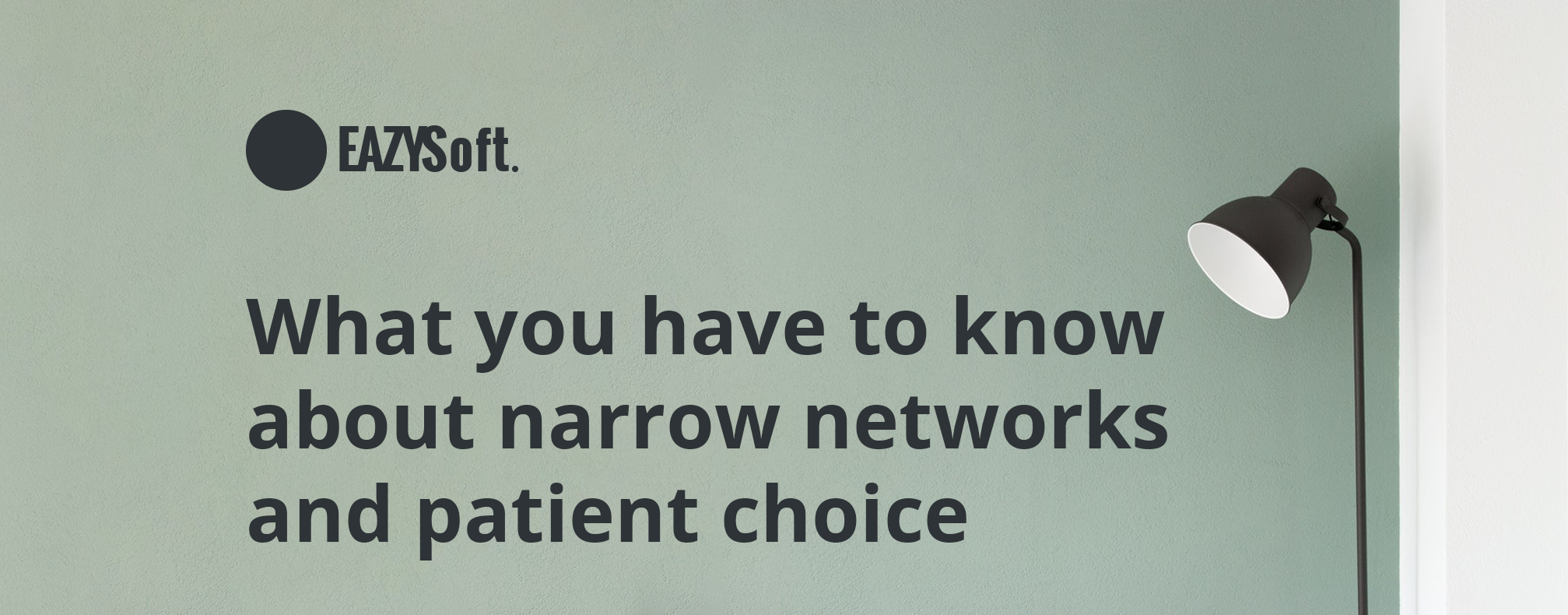
What you have to know about narrow networks and patient choice
As rising healthcare costs eat into bottom lines, it’s increasingly difficult for employers to continue offering the same benefit plan offerings without making some trade-off. That’s why employers are increasingly turning to narrow networks — in which health plans, or other offering narrow network products, start by cutting out the most expensive or poorest performing providers. (Providers are often willing to negotiate lower rates to remain in-network to maintain patient volume)
For health care providers, new forms of health insurance available through the exchanges are changing things. Specifically, narrow networks, offered by many of the exchange’s health plans, are increasing pressure on providers to reduce costs and provide high-quality care.
What Does a Narrow Network Mean?
Some health plans sold through the Affordable Care Act’s (ACA) health insurance marketplaces use “narrow networks” of providers. That is, they limit the doctors and hospitals their customers can use. Go to Doctor A or Hospital A and the plan will pay all or most of the bill. Go to Doctor B or Hospital B, and you may have to pay all or most of the bill yourself.
The narrow network strategy emerged long before the ACA, during the managed care era in the 1990s, and insurance companies and large, self-insured employers have used them ever since to control health care costs. In fact, for the first time, the ACA creates new consumer protections requiring that insurers provide a minimum level of access to local providers. A number of states have exceeded these federal standards using their discretion under the new law.
It is a wonderful thing that Narrow Network plans bring the reoccurring price down so that health insurance is financially viable. As long as they understand exactly how narrow their network coverage is. There are certain situations, for example, that require thinking outside the box. With today’s Narrow Network aspect there are some procedures that would be cheaper for a patient if done in a cash-based surgery center that was out-of-work.
How Investments In Tech Help Narrow Networks And Patient Choice Coexist ?
At first glance, it appears that phrases“patient choice” and “narrow network” are diametrically opposed to one another. But narrow networks and patient choice are indeed compatible. In fact, when looking at the letter of the law itself, it’s possible to both establish a narrow network and ensure patient choice and to do so in a way that honors that most cardinal healthcare rule: to serve the patient’s best interests.
The key is to be upfront about the narrow network and the financial interests that tie the associated facilities together. When presenting a patient with a list of prospective post-acute organizations they may be transferred to, it’s well within reason that hospitals list the preferred, narrow network facility first. As they do so, they can explain to the patient the current relationship and explain the reason for it: because these facilities have historically achieved the best performance.
In the ideal narrow network, one where hospitals evaluate a post-acute facility’s performance and then partner with the highest achievers, the facilities that stand out will be the very same that stand out to the patient.
How to make narrow networks more attractive to patients?
Strengthen what you do well traditionally: that’s your hospitals, physician practices, and high-end care in general. Ensure that quality, ease of access, and primary and follow-up care are available within the network.
Ingrain your system as a trusted partner: This means establishing a reputation in quality, customer service, and in a variety of care settings outside the acute space as a trusted manager of a patient’s care—from birth to death. That means managing care for most of the local population in all its markets by providing a guiding hand to patients in part through technology and geographical coverage.
Build and utilize an internal transformation group: Exceptional patient care is only part of the equation. Service and guidance to help patients navigate a confusing healthcare system—and this includes the financial element—is paramount.
Finally, patient choice and narrow networks can and should be aligned. By partnering with facilities that meet a certain threshold of care, hospitals can help patients sift through the data to make a valid, educated choice about their care.
